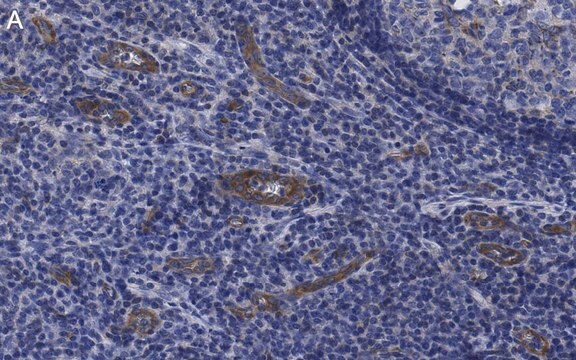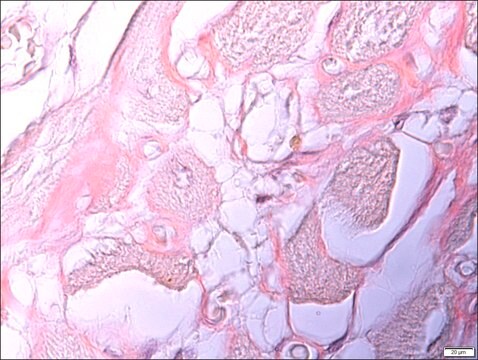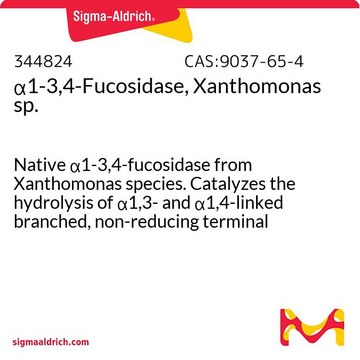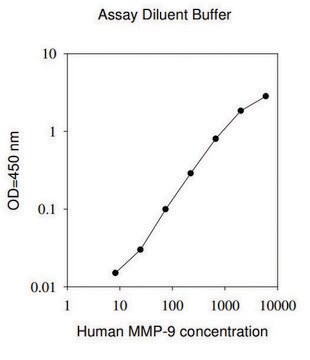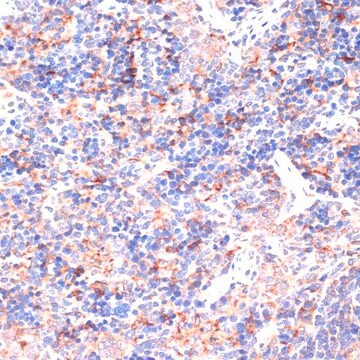MAB4416
Anti-Plet-1 (Placenta-expressed transcript 1 protein) Antibody, clone 1D4
clone 1D4, from rat
Synonim(y):
chromosome 11 open reading frame 34, hypothetical protein LOC349633, placenta expressed transcript 1
About This Item
Polecane produkty
pochodzenie biologiczne
rat
Poziom jakości
forma przeciwciała
purified antibody
rodzaj przeciwciała
primary antibodies
klon
1D4, monoclonal
reaktywność gatunkowa
human
reaktywność gatunkowa (przewidywana na podstawie homologii)
mouse (based on 100% sequence homology)
metody
flow cytometry: suitable
immunocytochemistry: suitable
immunohistochemistry: suitable
western blot: suitable
izotyp
IgG2aκ
numer dostępu NCBI
numer dostępu UniProt
Warunki transportu
wet ice
docelowa modyfikacja potranslacyjna
unmodified
informacje o genach
human ... PLET1(349633)
Opis ogólny
Recently, Plet-1 has been identified as a specific marker of early thymic epithelial progenitor cells. In the postgastrulation embryo, Plet-1 expression is highly restricted to the developing pharyngeal endoderm and mesonephros. This antibody recognizes the same protein as MTS20 and MTS24.
Specyficzność
Immunogen
Zastosowanie
Immunohistochemistry Analysis: A previous lot was used by an independent laboratory in IH (Depreter, M.G.L., et al., 2008).
Immunocytochemistry Analysis: A previous lot was used by an independent laboratory in IC (Depreter, M.G.L., et al., 2008).
Stem Cell Research
Pluripotent & Early Differentiation
Jakość
Western Blot Analysis: A 1:2,500 dilution of this antibody detected Plet-1 in 10 µg of human placenta cell lysate.
Opis wartości docelowych
Postać fizyczna
Przechowywanie i stabilność
Komentarz do analizy
Human placenta cell lysate
Oświadczenie o zrzeczeniu się odpowiedzialności
Nie możesz znaleźć właściwego produktu?
Wypróbuj nasz Narzędzie selektora produktów.
Kod klasy składowania
12 - Non Combustible Liquids
Klasa zagrożenia wodnego (WGK)
WGK 1
Temperatura zapłonu (°F)
Not applicable
Temperatura zapłonu (°C)
Not applicable
Certyfikaty analizy (CoA)
Poszukaj Certyfikaty analizy (CoA), wpisując numer partii/serii produktów. Numery serii i partii można znaleźć na etykiecie produktu po słowach „seria” lub „partia”.
Masz już ten produkt?
Dokumenty związane z niedawno zakupionymi produktami zostały zamieszczone w Bibliotece dokumentów.
Nasz zespół naukowców ma doświadczenie we wszystkich obszarach badań, w tym w naukach przyrodniczych, materiałoznawstwie, syntezie chemicznej, chromatografii, analityce i wielu innych dziedzinach.
Skontaktuj się z zespołem ds. pomocy technicznej
